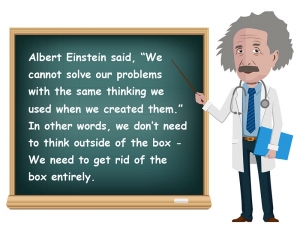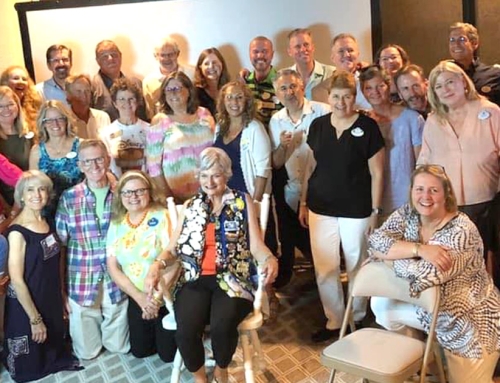
By Kim Court
Hospitals exist to heal, treat, and provide comfort to patients during times when they are unable to do so within their homes. There are numerous hospitals that provide exceptional customer service, but also many that struggle with maintaining a level of “soft-skill” service that is on par with their ability to heal and preserve life. For the most part, people have accepted this as an unpleasant reality of a hospital stay, matter-of-factly recognizing bland food, sterile environments, and generally uncomfortable living conditions as part in parcel of a hospital visit.
Lately, however, changes in out of pocket costs and rising levels of complaints have sparked change. Americans saw a nearly 40% increase in their out of pocket costs for hospital stays at the start of the decade. Being used to a culture ever increasing our demand for value, customer service, and constant options, patients are quickly beginning to choose a hospital as they would any other paid service, and all the trappings that go along with it – talking to friends, reading reviews, and practicing brand loyalty. And it only makes sense that they would.
Hospital stays are expensive – even if a patient’s insurance covers most of the cost, they pay hefty monthly fees to ensure financial protection. Think about other experiences that cost moderate to large sums of money – hotel stays, continuing education, airfare, and five-star restaurants, for example. People begin the experience with a certain expectation, and if it is not met or exceeded, they may choose differently the next time around. The truth is, patients now have a choice in hospitals, and they are going to choose in the same way that they select any of their elective purchases. They will shop around.

The Disney Experience
This brings us back to banishing the “box” that tells us certain things do or do not have a place in healthcare. To solve the competition issue facing hospitals, it’s time to look outside the industry, to the people that set the gold standard of customer experience: Disney. Walt Disney World, Disneyland, Disney Cruise Line, Disney movies…..all are tried and true and known for the quality of experience that comes with the price tag. So, what do they do that has made them the World’s favorite entertainment company? Much of it comes down to a relentless dedication to service and a one-of-a-kind experience.
“Disney’s products make people feel good, and feeling good is healthy!“
From a healthcare perspective, we, too, want customers to feel good – to be relaxed, informed, and comfortable – because they will feel better. The better they feel, the faster they heal – and that serves the hospital as much as it does the patient, the insurance company, the staff, the patient’s family, and the opportunity for the next patient to walk into a hospital that is going to provide them with world class service.
Listed below are a few things that Disney does to enhance the human experience, specifically on their cruise line. By breaking through the walls of the “hospitals are not Disney World” box, you can start to implement low-cost practices that will establish your facility as a cut above the competition, and most importantly, facilitate better healing for the patients you serve.
Consistency
On a Disney Cruise, you are one of potentially thousands of passengers – but it doesn’t feel that way. Consistency is key in making you feel like a special guest, and they do this by assigning each party the same service team for all dinners. This duo, whose personalities complement one another perfectly, look at your boarding photo before you arrive for the first time, and greet you by name as they seat you. They are your service team at each restaurant you visit, and they make it their purpose to understand what you do and do not like. This consistency also extends beyond the table. Disney’s crew who maintain the guest cabins are each dedicated to a certain set of rooms. They learn your schedule and work around it, to ensure that you come back to a fresh and cheerful room nearly every time you leave. Like magic.
Application: Doctors, nurses, and hospital administrators are busy, yet remain dedicated to their patient’s needs. The issue arises when the patients can’t see this dedication. Often nurses don’t have sufficient time to debrief between shifts and the patient feels the burden of explanation or re-introduction again and again. It would be helpful if the patients saw the incoming and outgoing nurses together, spending just a minute or two with the patient to show them hand-off is complete and keep them in the know. Remember, being a patient can be isolating, and a visit from a nurse or doctor is the only way to glean information about what comes next. Doctors who make rounds and visit their patients each day – at the same time of day – provide a schedule and continuity for patients that allows them to become an active part of their healing. ℠
Consistency can be attained by simply remembering that the patient does not see what happens on the other side of their door. Regular updates and reminders that their presence is never forgotten are almost always welcome.
Cheerful
Disney personifies cheer. You won’t likely find trash lying about or unpleasant cast members on a Disney property or cruise, nor will you see a character on a cell phone, partially out of costume, or in the middle of an argument. Disney literally wants guests to be transported to a fantastical place when they step onto the ship or into the park – it doesn’t just look magical, it is magical. Every step of a guest’s experience is mapped out, researched, and invented to provide an exceptional customer experience.
Again, the hospital is not Walt Disney World. However, if a patient is greeted by a care team member who seems bored, exhausted, or unengaged, it still sends a strong signal to the patient that something is wrong. It can also cause worry in the patient that they may not be in capable hands. Stress is counterproductive to healing; It causes levels of the stress hormone cortisol to rise, taking a toll on all systems of the body. Blood pressure escalates and mood instability occurs, making it harder for the body to heal. Hospitals need added cheer because they are not naturally cheerful places. This is critical, as studies have shown time and again that a positive state of mind goes a long way towards healing. By choosing the right background music, eliminating noise, placing equipment in the proper place, and cultivating a general cheer, patients will begin to relax and trust in the staff.
Application: Many hospitals are understaffed. They won’t grow their team, however, by pushing care workers to burn out. An entire article could be written about how to support staff and provide a healthy work environment, but it is important to remember that it’s a stressful, often thankless job, and the more cheer staff feel, the more they will give. ILS offers customized options for hospitals to reinvigorate their staff, and experience shows the difference is almost immediately seen from the patient’s perspective.
Environment is also key at setting the mood. Outdated décor, fading carpet or paint, equipment unnecessarily left in plain view, heavy colors, and lack of sunlight can be depressing. A fresh coat of paint won’t break the bank, but it will do wonders to raise the spirit within the hospital walls. Flowers, sunlight through windows, simple, modern artwork, and soft overhead lighting or lamps can make a patient feel at home and at ease. It does not take an entire revamping of the whole facility to make a difference; building upon consistent, slight changes over time will start to freshen up the atmosphere. In one instance we’ve encountered, a hospital waiting room replaced magazines with simple board games, such as Connect Four. The staff was surprised at the amount of use the games received, bringing people together and sparking conversations and encouraging a human connection.
Comfort
There’s something to be said for heading back to your cabin on a Disney cruise and snuggling into a soft, warm comforter that has been turned down and adorned with a chocolate. Or, drying off with towels that are fluffy and feel new. Or not being leery about walking on the cabin carpet without socks, because you can tell it is vacuumed every day. Individual temperature controls are in each room, as well, so you feel as physically comfortable as possible.
Better comfort means better sleeping – and sleeping rejuvenates the body
Just as crew members on a Disney cruise, hospital staff are usually on their feet, moving from place to place. It can be easy for them to forget that hospitals are generally quite cold. Patient’s thin hospital gown and light blanket may not be enough to keep them comfortable, especially for small children or the elderly. It can also be extremely difficult to settle in a hospital bed when the only sleeping position is on the back. Better comfort means better sleeping – and sleeping rejuvenates the body. With the continual noise, such as talking or beeping equipment, unavoidable nighttime check-ups, uncomfortable beds, illness, and usually roommates, the comforts of home can seem a million miles away when trying to get a good night’s sleep in a hospital.
Application: Extra blankets, thick mattress covers, and a few varied sizes in pillows are greatly appreciated by patients. Simple aromatherapy techniques, such as the use of lavender scented dryer sheets for bedding, can calm nerves. Additionally, offering a large chair by each bed allows a patient to have the support of a loved one for an extended period. Solid separation curtains which truly provide privacy between patients are also key.
Of course, it is sometimes unavoidable, but both patient’s privacy should always be respected. Temperature, furniture, bedding, lights, and noise levels are all factors in a patient’s comfort level. As an example, one hospital we have encountered offers warm blankets to families and patient’s in ER waiting rooms, making wait times a bit more comfortable all around.
Food You Want to Eat
On a Disney Cruise, there is food at every turn. Passengers have a myriad of choices in activities, and they can always refuel according to their changing tastes. Formal adult only dining, frozen yogurt machines on deck every afternoon, 24-7 beverage stations, huge breakfast buffets, free room service, and complete permission to order off menu mean you never have to eat the same thing twice.
Granted, patients in a hospital may not have equivalent appetites to those on a cruise. They do, however, need to keep energy levels up despite having poor appetites. An offering of bland, redundant meals does little to encourage a patient to eat. Sometimes the only food available is not even appropriate for the patient’s needs. One patient ILS encountered had just had major surgery in their mouth, and was offered an uncut apple shortly after waking. On top of being the first food this patient had been allowed in 24 hours, they were completely unable to eat it!
Application: One way to ensure a patient will want to eat what is on their plate is to allow them to choose it. By offering printed menus of what is available for the day or week, those patients who can have solid food will be encouraged to do so. Hospital administrators should eat the food on a regular basis, as well. If it’s not good enough for regular lunches or snacks, it’s not good enough for patients and their families.
Branding
Branding is key. Every hospital has an identity centered around their mission, patients, culture, and history. If you go on a Disney Cruise, you never forget that you are on a Disney vacation. More importantly, however, you don’t even realize that Disney is purposefully reminding you how great their product is. This is because the branding is subtle, strategic, and inviting. Look in any Disney gift shop, whether on a ship, in a hotel, or at a park – customers are paying for merchandise that advertises Disney! The logo and imagery is placed all over tote bags, hats, clothing, luggage, and jewelry. People identify with the Disney brand so strongly that they do the company’s advertising for them! A hospital’s name, logo, and mission statement are important to your clients. They want to feel secure about a decision as monumental as their health and well-being.
An exceptional hospital will earn a great reputation, and the name will mean something to the patients it serves and the care team it employs. Healthcare should always be personable. It’s a one-size-fits-one experience. By doing away with the notion that hospitals cannot look to other industries for ways to grow, the sky can be the limit. People today expect to get what they pay for. Give it to them through creative thinking.
Or, like Disney, give them even more.





